In the ever-evolving landscape of sustainable resource management, one agricultural by-product has emerged as a versatile and eco-friendly powerhouse: bagasse. This fibrous residue, left behind after the extraction of juice from sugarcane, is proving to be far more than mere waste. With its rich composition and adaptable properties, bagasse is finding its way into a diverse array of industries, offering innovative solutions to environmental challenges and opening up new avenues for value-added products.
Understanding Bagasse:
Before we dive into its applications, it’s crucial to understand what bagasse is made of. This understanding forms the foundation for its diverse uses across industries. Bagasse typically consists of:
1. Cellulose (45-55%): The primary structural component of plant cell walls, cellulose is a linear polymer of glucose units. Its abundance and properties make it valuable for various applications, from paper production to advanced materials.
2. Hemicellulose (20-28%): This heteropolymer consists of various sugar monomers. Its presence contributes to the overall structure and properties of bagasse.
3. Lignin (18-24%): An complex polymer that provides strength and rigidity to plant cell walls. Lignin’s unique properties make it valuable for various industrial applications.
4. Minerals (1%): These inorganic components contribute to the overall composition and can influence certain applications.
5. Ash (1%): The residual inorganic material left after complete combustion.
6. Sugar (5%): Residual sugars from the extraction process, which can be further utilized in certain applications.
Traditional Uses of Bagasse:
1. Fuel: One of the most common uses of bagasse is as a fuel source. Sugar mills often burn bagasse to generate steam and electricity, making their operations more energy-efficient and reducing reliance on fossil fuels. This practice not only helps manage waste but also contributes to reducing the carbon footprint of sugar production.
2. Paper Industry: The high cellulose content of bagasse makes it an excellent raw material for paper production. Bagasse-based paper is not only eco-friendly but also helps reduce deforestation by providing an alternative to wood pulp. Many countries, especially those with significant sugarcane industries, have embraced bagasse as a sustainable source for paper and cardboard production.
3. Agriculture: Returning bagasse to the fields as a fertilizer or soil amendment enhances soil structure, improves water retention, and adds organic matter to the soil. This circular approach helps maintain soil health and reduces the need for synthetic fertilizers, promoting sustainable agricultural practices.
4. Food Packaging: Biodegradable plates, cups, and containers made from bagasse are becoming increasingly popular in the food service industry. These products offer similar functionality to plastic but decompose naturally, significantly reducing environmental impact.
Modern and Innovative Uses of Bagasse:
1. Oil Spill Adsorption: Bagasse can be transformed into a highly effective oil sorbent through acetylation, making it a sustainable and biodegradable solution for oil spill management. This modified bagasse can absorb oils from water surfaces, providing a valuable tool for cleaning up oil spills in marine and freshwater environments.
2. Treatment of Sulfate-Rich Wastewater: Bagasse offers a sustainable alternative as a carbon source for sulfate-reducing bacteria, effectively removing sulfate from wastewater. This approach not only reduces the need for chemical additives in wastewater treatment but also provides a cost-effective and efficient solution.
3. Production of Xylitol: Bagasse can be used to produce xylitol, a low-calorie sweetener with dental health benefits, through a more sustainable bioprocess. Xylitol produced from bagasse offers several advantages, including being safe for diabetics, inhibiting the growth of bacteria responsible for tooth decay, and being derived from a natural source.
4. Lignin Extraction and Utilization: Lignin can be extracted from bagasse and used as a renewable fuel source, or converted into various phenolic compounds, chelating agents, and antioxidants. These products have applications in resins, adhesives, and other chemical products, as well as in water treatment and soil remediation.
5. Furfural Production: Bagasse can be used to produce furfural, a versatile chemical with applications in fertilizers, perfumes, antacids, and resins. The production of furfural from bagasse not only provides a renewable source for this chemical but also adds value to agricultural waste, contributing to a more circular economy.
6. Medium Density Fiberboard (MDF) Production: Bagasse fibers can be used to produce MDF, a type of engineered wood product, offering a sustainable alternative to traditional wood-based MDF. Bagasse-based MDF is finding applications in furniture manufacturing, interior design, and construction, providing a more sustainable alternative to traditional wood-based products.
7. Fiber Fabric Production: Bagasse fibers can be combined with materials like polypropylene and flax to develop composite fabrics with improved properties. These bagasse-based fabrics offer several benefits, including sustainability, enhanced strength, durability, and comfort.
8. Reducing Sugar Production: Bagasse can be hydrolyzed to produce reducing sugars like glucose and fructose, providing a source of fermentable sugars for various applications. This process not only adds value to agricultural waste but also offers a sustainable alternative to traditional sugar production methods.
9. Nanocellulose Production: Bagasse serves as an excellent source for nanocellulose production, offering a sustainable alternative to wood-based sources. Nanocellulose derived from bagasse finds applications in various fields, including water treatment, reinforcement materials, biomedical applications, and food packaging.
10. Building Material Enhancement: Bagasse ash can be used as a supplementary cementitious material, enhancing the properties of concrete and other building materials. The addition of bagasse ash to building materials offers several benefits, including improved strength, increased durability, and reduced carbon footprint.
11. Bioenergy Production: Bagasse can be converted into bioethanol, a renewable energy source. This biofuel offers a sustainable alternative to fossil fuels, reducing greenhouse gas emissions and dependence on non-renewable resources.
12. Chemical Production: Bagasse can be used to produce various chemicals, such as biodegradable plastics and detergents. These products offer a sustainable alternative to traditional chemicals, reducing environmental impact and promoting a circular economy.
13. Food Industry: Bagasse can be used as a natural food additive, providing a sustainable alternative to synthetic ingredients. Its applications include food packaging, paper production, and textile manufacturing.
14. Animal Feed: Bagasse can be used as animal feed, providing a nutritious and sustainable alternative to traditional feed sources.
15. Landscaping and Erosion Control: Bagasse can be used as a natural mulch, reducing soil erosion and promoting healthy plant growth.
16. Vegan Leather Production: Bagasse, the fibrous residue from sugarcane processing, is being utilized to produce sustainable vegan leather alternatives. Companies are developing innovative methods to transform bagasse into high-quality leather substitutes, offering a game-changing solution for the fashion industry. This eco-friendly material has the potential to revolutionize the leather industry, reducing environmental impact and promoting cruelty-free fashion choices.
17. Dietary Fiber from Bagasse: Bagasse is also being explored as a source of dietary fiber, which can be used as a natural ingredient in food products. The fiber extracted from bagasse is rich in prebiotics, which can help support gut health and promote digestive well-being. This innovative application of bagasse offers a sustainable and natural solution for the food industry, while also providing a new revenue stream for sugarcane farmers and processors.
Conclusion:
The story of bagasse serves as a powerful reminder that what we often consider waste can, with innovation and creativity, become a valuable resource. As industries continue to seek sustainable alternatives and governments worldwide push for greener practices, materials like bagasse will play an increasingly important role in our industrial and environmental landscape. The future of bagasse utilization looks promising, with ongoing research likely to uncover even more applications. By embracing this versatile and eco-friendly material, we can reduce waste, promote sustainability, and contribute to a more circular economy.
Benefits of Bagasse Utilization:
– Reduces waste and promotes sustainability
– Offers a renewable and biodegradable alternative to traditional materials
– Provides a cost-effective and efficient solution for various industries
– Supports a circular economy and reduces dependence on non-renewable resources
– Creates new economic opportunities and promotes innovation
Challenges and Opportunities:
– Developing efficient and cost-effective processing technologies
– Overcoming regulatory and market barriers
– Scaling up production to meet growing demand
– Exploring new applications and industries
– Encouraging adoption and promoting awareness
In conclusion, bagasse is a versatile and eco-friendly material that offers a wide range of applications across various industries. Its utilization promotes sustainability, reduces waste, and supports a circular economy. As we continue to explore new applications and develop innovative technologies, the potential of bagasse is likely to grow, providing a valuable resource for generations to come.
Disclaimer: The views and opinions expressed in the article by Dilip Patil, Managing Director of Samarth SSK Ltd., are solely his own.





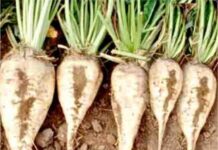
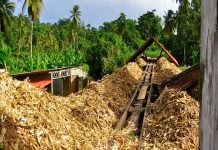




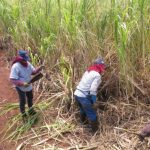

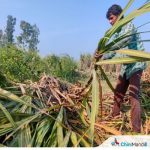
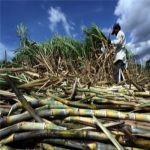
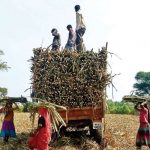


The most potential use of Bagasse is in production of Biofuels such as Biochar, Biomethanol, Green H2 etc. Bio ethanol through 2 G route has been found to be commercially not viable. This is what my Company has been promoting as Project Consultants for many Big corporates in India, as we have been involved in Development of Biomass based gasification technology at large scale for over 3 decades. Currently working with several big sugar mills.